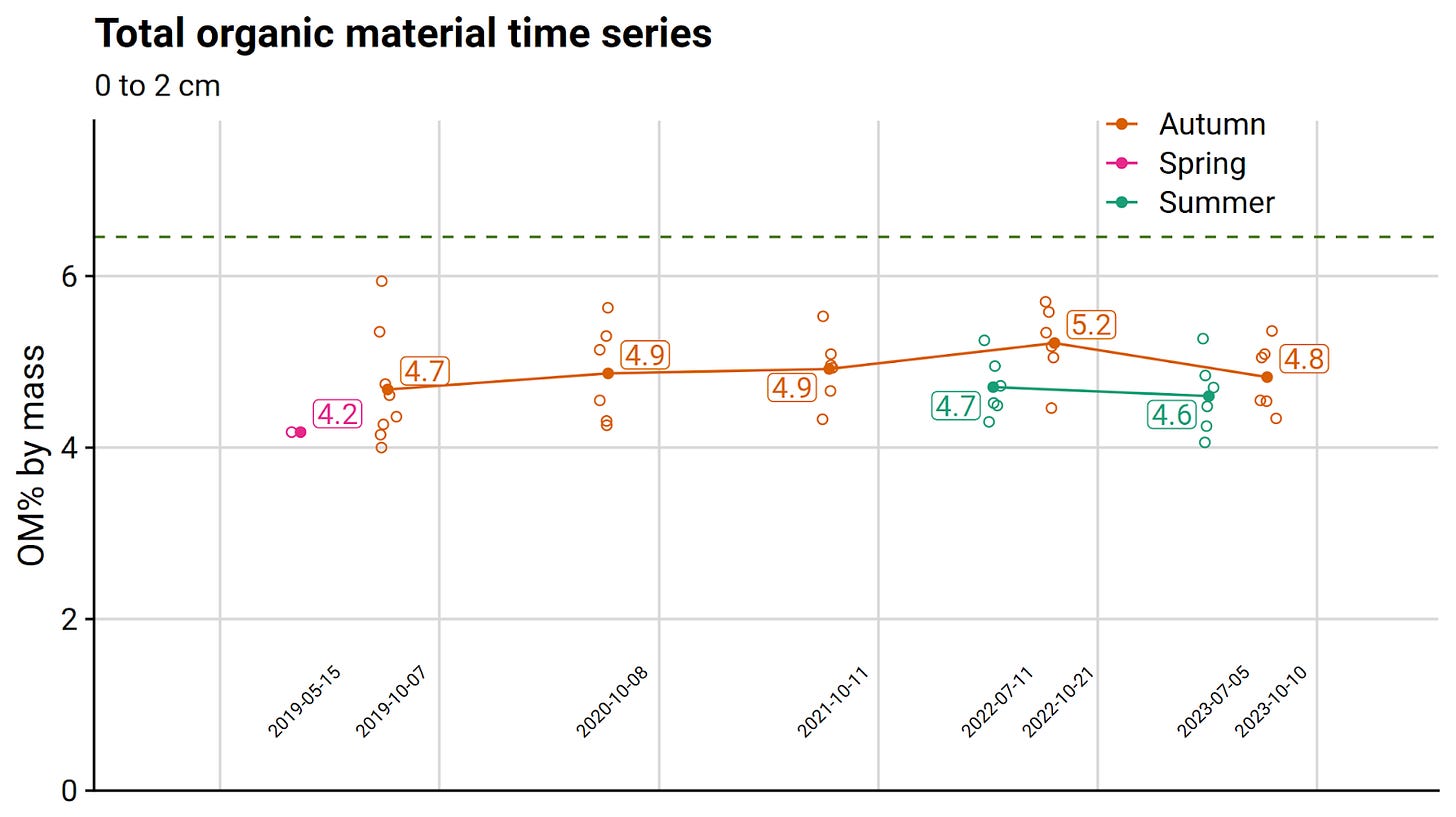It’s now been four complete golf seasons: 2020, 2021, 2022, 2023 and our approach of nearly eliminating in-season surface disruption is working. Still, one of the criticisms I hear, or hang ups people have in utilizing the approach themselves, is a concern that it will work for awhile, but it won’t work forever.
This approach is working for us. There is NOTHING giving any indication it isn’t working, or that at some point in the future, we can expect imminent demise.
At what point can we say, without question–this approach works in the short and long term?
The conventional wisdom is that a putting surface is in a perpetual and inevitable state of decline, with such foreordained fate avoided only through the regular and sometimes aggressive intervention of the golf course superintendent. Tines, blades and sand make up the usual array of intervening tools.
I was once of the same belief, but in 2020, we just kept leaving the surfaces alone, and an amazing thing happened. Nothing!
For four years, from Opening Day to Closing Day, we have not performed a ‘Maintenance Monday’ event on our putting surfaces and they just keep yielding championship-level performance.
The chart below shows a time series of our OM2 test results. This is the total organic material in the top 2 cm of the rootzone.
This is the fifth October in which we have tested the OM2 and the results are more or less the same. 4.7, 4.9, 4.9, 5.2 and 4.8. What should the total organic material percentage be in the top 2 cm? Given the performance of our putting surfaces, I would say this is a perfect number.
The performance metrics have been nearly flawless, I feel no need to strive for a lower number, therefore I feel no need to perform disruptive maintenance practices. Irrigation gets into the surfaces the way we want, we don’t dry too fast, or stay wet too long. And as you can see in the chart below, we’re able to maintain desired greenspeed throughout the summer months.
A couple things I want to point out in the greenspeed chart above. 2019 and 2020 are represented by the pink lines. 2019 was the last season we applied in-season topdressing and from July 1 to Aug 1, I felt the need to take the foot off the gas, because our bentgrass declined in places. In 2020, anticipating decline, I lifted again, but there was no decline. As we moved through 2021, 2022 and 2023, it became obvious to me, there was no need to take the foot of the gas. Why? In my opinion, this is due to the lack of persistent sand at or near the surface of the green, continually causing mechanical damage to the turf.
This may seem like preaching, or evangelizing. I’m simply trying to make the point that this approach of less to no disruption during the golf season can absolutely work and it can work over the long term.






Chris, how do you minimize thatch build-up without regular surface top dressing?